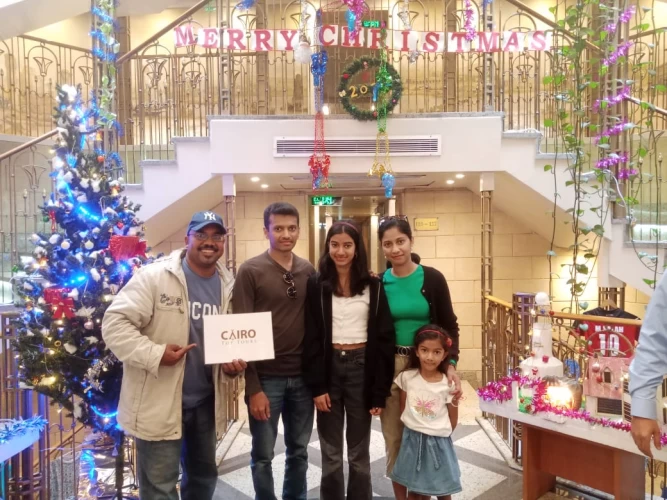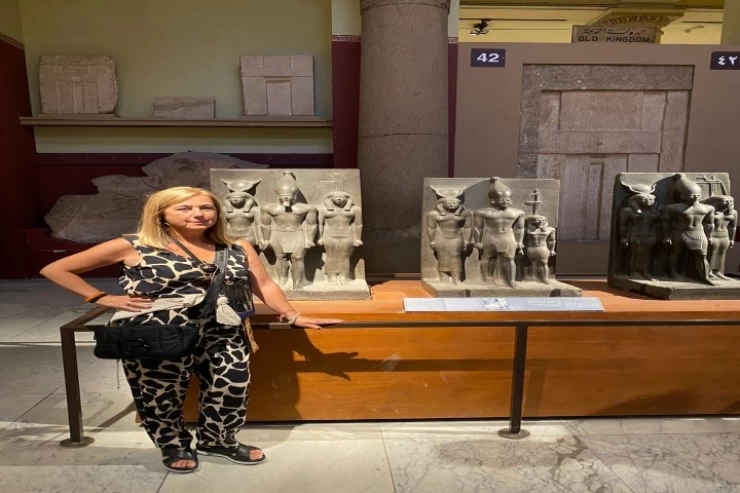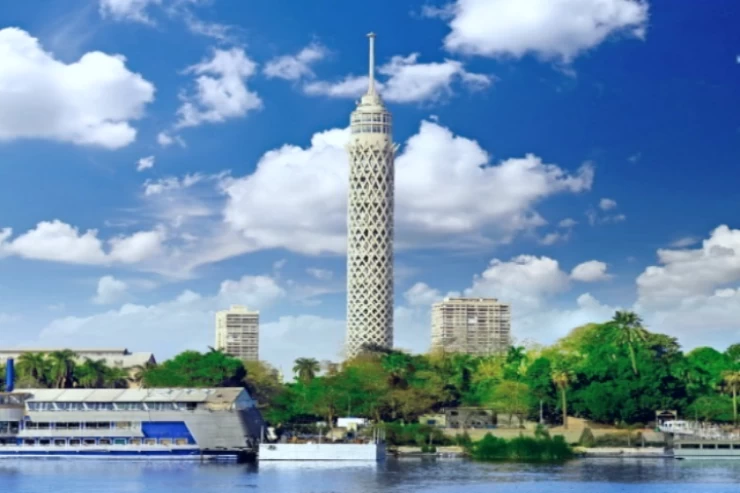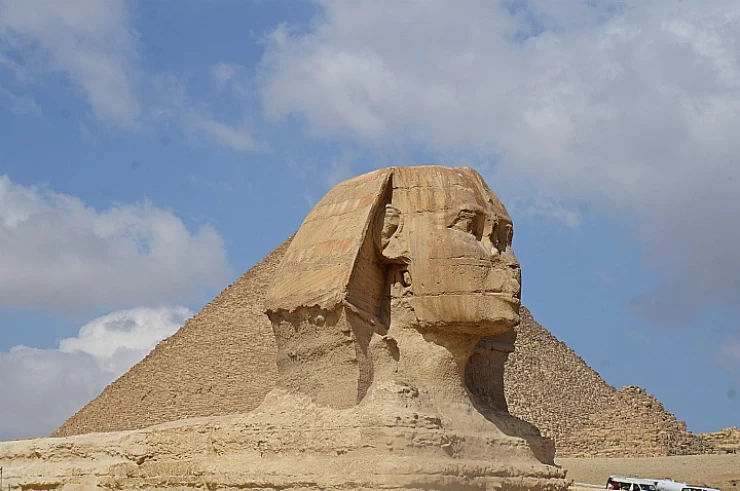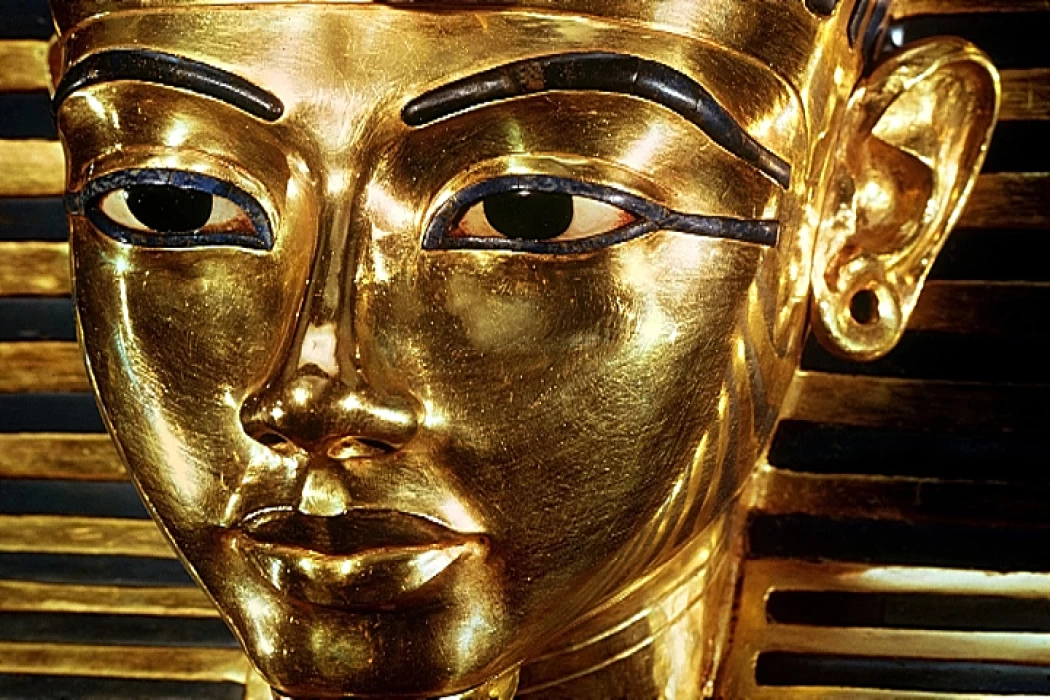
Egyptian Museum in Downtown
This is the earliest museum in the Middle East, bearing the largest collection of ancient Egyptian artifacts in the world. It houses an enormous collection of artifacts associated with the pre-dynastic periods to the Greek and Roman eras.
It started in 1895 with an international architectural competition won by Marcel Dorneo—the French architect—to design the museum building. Khedive Abbas Hilmi II opened it in 1902.
The museum contains many artifacts and statues, such as the statues of King Amenhotep III and Queen Tiye. This statue is considered a group statue of the family of the king, his wife, and his three daughters. The museum also includes the coffin of Mbakah Kawit, the wife of King Mentuhotep II (Nebhepetre), the founder of the Middle Kingdom. The coffin is engraved on the outside with aspects of daily life.
On one side of the coffin, the queen is shown drinking, and in front of her is a table full of food. On the other side, the queen is shown holding a lotus flower, and in front of her is her jewelry box, topped with a view of the jewelry inside it and other engravings.
The museum also contains a group statue of the dwarf Seneb and his family, found inside a naos in his funerary mastaba in Giza, which is the first tomb to have a dome-shaped roof and circular rooms. Seneb is depicted sitting cross-legged, and his wife sits next to him, embracing him affectionately (her hand on his shoulder). She is of normal height.
It was carved in this way to achieve symmetry in the statue. The sculptor depicted Seneb's sons in place of his legs so that he became the same height as his wife. As per the rules of ancient Egyptian art, the two children are depicted with each of them putting their index fingers in their mouths. The boy stands on the left and has a darker skin tone than his sister standing beside him.
The two large statues flanking the main entrance were designed by Ferdinand Weber to represent Upper and Lower Egypt. The foundation stone of the Egyptian Museum was laid by Khedive Abbas II on April 1, 1897.
Gaston Maspero was responsible for the scientific supervision and the task of transporting and displaying the museum's artifacts after construction process.
The Egyptian Museum focused on antiquities, has evolved in ideas from the time of Muhammad Ali Pasha from 1805 up to 1848, when he ruled Egypt. Being a monarch who knew about Egypt’s heritage and its threats through the outflow of things that went out of Egypt, he proclaimed a command establishing the first Antiquities of Egypt museum in Coppers Cairo. The location of this first museum was also close to El-Ezbekia Garden, and its displays were well organized by Hakikan Effendi and supervised by Youssef Diaa Effendi. Shaikh Rifa’a al-Tahtawi was instrumental during this period in averting the loss of Egypt’s archaeological wealth.
He controlled excavations and maintenance but also made laws of his own, and they included that no one should dig again unless permission was granted. Moreover, Al-Tahtawi ordered that every relic that was found was to be brought and kept in the El-Ezbekia Museum and ordered that such relics be not taken out of the country so that they remained in Egypt.
This productive activity prevented the loss of ancient monuments of Egypt as well as the birth of the first principles of archaeology in Egypt, which gave rise to the present-day Egyptian Museum.
It is regarded as one of the first archeological museums in the Middle East. It holds uncovered creases of royalty of Egyptian dynasties. The museums consist of more than 170000 objects, objects covering the chronology from pre-dynasty time to the Graeco-Roman period (5500 BC-AAD 364). The museum is found in Cairo, Broaden Tahir Square.
The designer is Marcel Dourgnon, a French national, and its construction was done by the famous Italian company of Giuseppe Garozzo and Francesco Zaffrani.
The Egyptian Museum’s treasures include the treasures of the Golden Mask of the young Pharaoh Tutankhamun and the Treasures of the King. The Golden Funerary Mask, also known as the mummy mask, is an exquisite handcrafted artistic artifact that captures everywhere elegance.
One of the other notable artistic works in the museum is the Menkaure Triads, which was found at the valley temple close to the Giza pyramids. It is carved in a single piece of stone depicting a king in the crown of upper Egypt. The museum has numerous collections from the various Egyptian civilizations and different periods, and it is one of the activities that are carried out in Cairo day tours from the airport, which is incomparably enjoyable to see pieces that are many centuries old.







